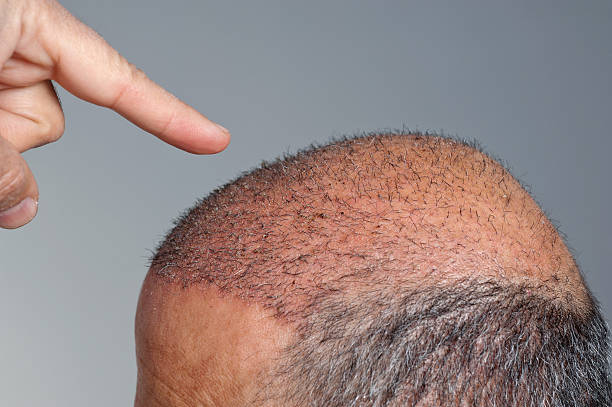Scalp Micropigmentation: A Modern Solution for Hair Loss
Scalp micropigmentation (SMP) has emerged as a groundbreaking technique in the battle against hair loss, offering a non-surgical alternative to traditional hair restoration methods. This innovative procedure involves the application of pigment to the scalp, creating the illusion of a fuller head of hair or a closely-cropped buzz cut. As more individuals seek solutions for thinning hair and baldness, SMP has gained traction for its ability to provide natural-looking results without the need for invasive surgery or ongoing maintenance. The rise of this technique reflects a growing trend towards cosmetic procedures that prioritize minimal downtime and long-lasting effects, addressing the psychological impact of hair loss while offering a practical solution for those who may not be candidates for hair transplants or other interventions.

How SMP Works
The SMP procedure involves the use of microneedles to deposit pigment into the dermal layer of the scalp. Unlike traditional tattoos, which penetrate deeper layers of the skin, SMP targets a more superficial level, allowing for greater precision and control. Practitioners use a range of pigment shades to match the client’s natural hair color and skin tone, creating thousands of tiny dots that replicate the look of shaven hair follicles.
Candidates and Applications
Scalp micropigmentation caters to a diverse range of individuals experiencing hair loss. Men with male pattern baldness often opt for SMP to create the appearance of a full head of closely-cropped hair. Women with thinning hair can benefit from the technique to add density and camouflage visible scalp areas. Additionally, SMP has proven effective for concealing scars from previous hair transplant procedures or injuries, as well as addressing conditions like alopecia areata.
The Procedure and Recovery
A typical SMP treatment involves multiple sessions, usually spaced a few weeks apart. Each session lasts several hours, during which the practitioner meticulously applies pigment to the scalp. The process is generally considered less painful than traditional tattooing, with many clients reporting minimal discomfort. Recovery time is minimal, with most individuals able to return to normal activities immediately after treatment. Some redness and mild swelling may occur but typically subside within a few days.
Longevity and Maintenance
One of the key advantages of scalp micropigmentation is its longevity. While not permanent like traditional tattoos, SMP results can last several years before requiring touch-ups. Factors such as sun exposure, skincare routines, and individual skin characteristics can affect the longevity of the results. To maintain the appearance of SMP, clients are advised to protect their scalp from excessive sun exposure and avoid harsh exfoliants or chemical treatments that could fade the pigment.
Psychological Impact of SMP
The psychological benefits of scalp micropigmentation cannot be overstated. Hair loss can significantly impact self-esteem and confidence, particularly in younger individuals. SMP offers a solution that can restore a sense of normalcy and improve body image. Many clients report feeling more confident in social and professional settings after undergoing the procedure, highlighting the profound emotional impact of addressing visible hair loss.
Technological Advancements in SMP
Recent years have seen significant advancements in SMP technology and techniques. Digital mapping systems now allow practitioners to create more precise and natural-looking hairlines, tailored to each client’s facial structure and preferences. Improved pigments offer a wider range of color options and better long-term stability, reducing the risk of color shifts over time. These technological improvements have contributed to the growing popularity and acceptance of SMP as a viable hair loss solution.
Comparing SMP to Other Hair Loss Treatments
When considering hair loss treatments, it’s essential to understand how SMP compares to alternatives like hair transplants, wigs, or medication. Unlike hair transplants, SMP does not require donor hair and is suitable for individuals with extensive baldness. It offers a more permanent solution than wigs or hairpieces, with lower maintenance requirements. While medications like finasteride or minoxidil aim to slow hair loss or promote regrowth, SMP provides an immediate cosmetic solution. However, it’s important to note that SMP does not restore actual hair growth, making it a complementary rather than competitive option to medical treatments.
The Future of Scalp Micropigmentation
As the field of scalp micropigmentation continues to evolve, several trends are shaping its future. Research into biocompatible pigments promises even longer-lasting results with reduced risk of allergic reactions. Virtual reality technologies are being explored to provide clients with more accurate previews of their potential results. Additionally, combination therapies that integrate SMP with other hair restoration techniques are gaining interest, offering more comprehensive solutions for individuals with varying degrees of hair loss.
In conclusion, scalp micropigmentation represents a significant advancement in the field of cosmetic hair loss solutions. Its ability to provide natural-looking results with minimal invasiveness has made it an attractive option for many individuals struggling with hair loss. As technology and techniques continue to improve, SMP is likely to play an increasingly important role in the spectrum of hair restoration treatments, offering hope and confidence to those affected by hair loss.




